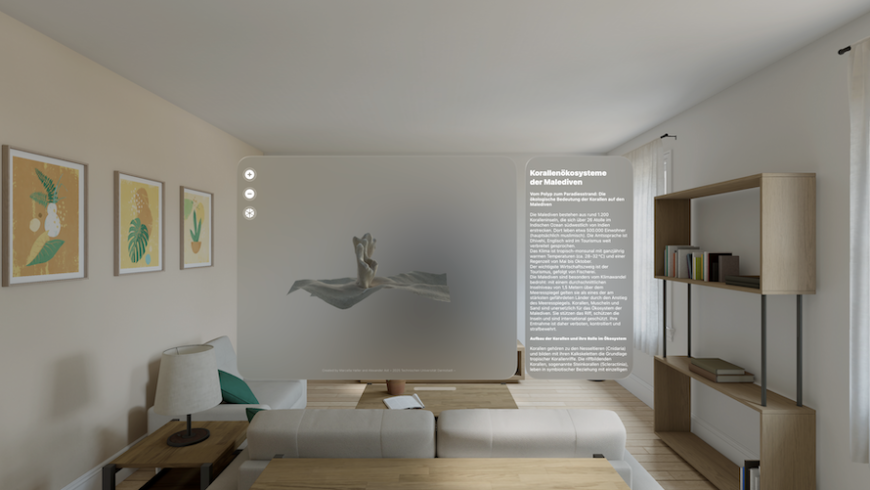ARtemisXR: Learning in the Third Dimension
Expanding ARtemis for the Higher Education Context
‘ARtemisXR’ was developed as part of the “fuels – Future Learning Spaces” project in 2025.
Previous development steps in the progress of the project were: Development of the ‘ARtemis’ app in 2023, Workflow Development and Elaboration of the Toolkit around ‘ARtemis’as well as the development of ARtemis 2.0 in 2024.
With ARtemisXR in 2025, a spatial extension of the ARtemis app ARtemis appwas pursued. While ARtemis already enables the integration of 3D models into AR scenarios, ARtemisXR goes one step further: learning becomes immersive and multimedia-based. Serving as a bridge between ARtemis and the Apple Vision Pro (opens in new tab), ARtemisXR brings texts, images, and 3D models together in a shared spatial context.
With the Apple Vision Pro, teachers and students can enter the world of “spatial computing.” Digital content is no longer displayed on a flat screen but becomes part of the real environment.
The underlying concept of ARtemisXR is based on two core layers of the learning space:
- the Window Space, which refers to two-dimensional windows in space ideal for explanatory texts, descriptions, images or additional information,
- and the Volume Space, which represents fully three-dimensional depictions in which objects can be experienced in a realistic and interactive way.
Both spaces are seamlessly connected. The combination of 3D objects, text and images creates a multimodal learning experience designed to address the diverse needs of learners.
In the higher education context, ARtemisXR opens up a wide range of didactic perspectives with regard to active, exploratory, and social learning. Students can move freely, walk around models (e.g. of buildings, organs, or molecules), enlarge them, rotate them, or reposition them. They can analyse a 3D model while simultaneously reading background information or viewing an explanatory graphic in a floating window next to it.
With the Vision Pro, several people can also enter the same learning space, regardless of their physical location. Students and teachers see the same model, discuss it within the space, and access the same supplementary information.
As with ARtemis, ARtemisXR is also designed to support teachers and students without any programming knowledge. 3D models from existing ARtemis collections can be imported and linked with metadata, texts, and images. The intuitive control through hand and eye gestures reduces technical barriers and enables a quick and easy introduction to spatial teaching.
fuels Taxonomy
#Size --> Spaces, objects
#Tag --> on site / at home
#Technology --> MR
#Didactic --> explorative, collaborative
Learn more about the fuels Taxonomy
Contact
Alexander Ast / fuels Team – E-Learning Group – TU Darmstadt
Marcella Haller / fuels Team – E-Learning Group – TU Darmstadt



